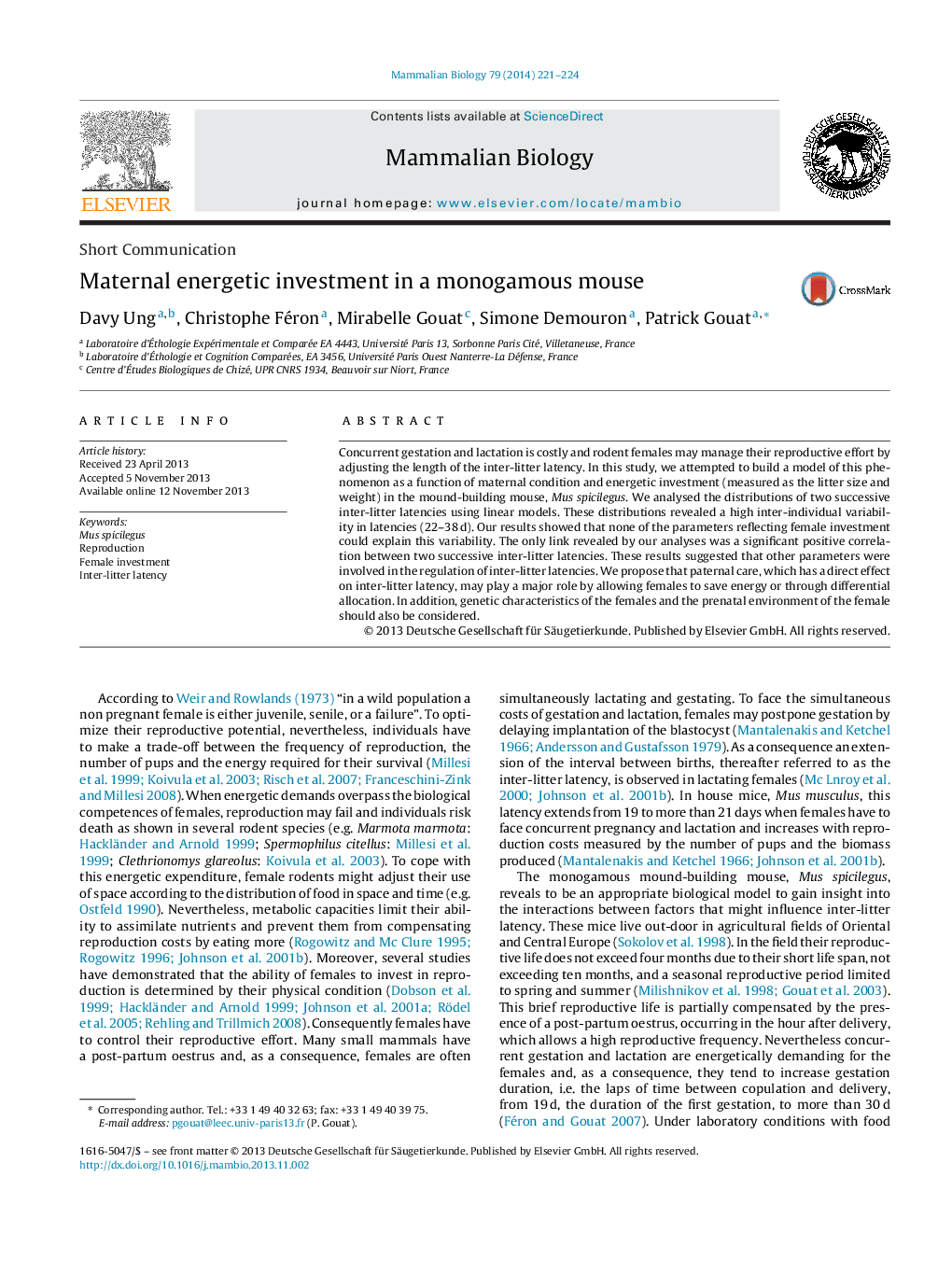| Article ID | Journal | Published Year | Pages | File Type |
|---|---|---|---|---|
| 2193549 | Mammalian Biology - Zeitschrift für Säugetierkunde | 2014 | 4 Pages |
Concurrent gestation and lactation is costly and rodent females may manage their reproductive effort by adjusting the length of the inter-litter latency. In this study, we attempted to build a model of this phenomenon as a function of maternal condition and energetic investment (measured as the litter size and weight) in the mound-building mouse, Mus spicilegus. We analysed the distributions of two successive inter-litter latencies using linear models. These distributions revealed a high inter-individual variability in latencies (22–38 d). Our results showed that none of the parameters reflecting female investment could explain this variability. The only link revealed by our analyses was a significant positive correlation between two successive inter-litter latencies. These results suggested that other parameters were involved in the regulation of inter-litter latencies. We propose that paternal care, which has a direct effect on inter-litter latency, may play a major role by allowing females to save energy or through differential allocation. In addition, genetic characteristics of the females and the prenatal environment of the female should also be considered.
